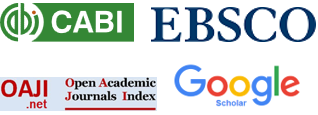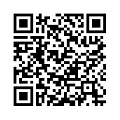Submissions
Submission Preparation Checklist
As part of the submission process, authors are required to check off their submission's compliance with all of the following items, and submissions may be returned to authors that do not adhere to these guidelines.- The submission has not been previously published, nor is it before another journal for consideration (or an explanation has been provided in Comments to the Editor).
- The language of the paper is English.
- The paper adheres to the page limit specific to the paper type (see Author Guidelines).
- The text adheres to the stylistic and bibliographic requirements outlined in the Author Guidelines.
- Where available, URLs for the references have been provided.
- The paper is submitted as a single Microsoft Word document (manuscripts in PDF are not accepted)
- Graphics (i.e. figures, schemes, etc.) are also submitted in separate files. The file name should be descriptive for the graphic. Chemical Structures and schemes may be supplied in ChemWindow format and other graphics in Microsoft Excel or Microsoft PowerPoint format. Chemical structures should be produced with the use of a drawing program such as ChemDraw or ChemWindows.






